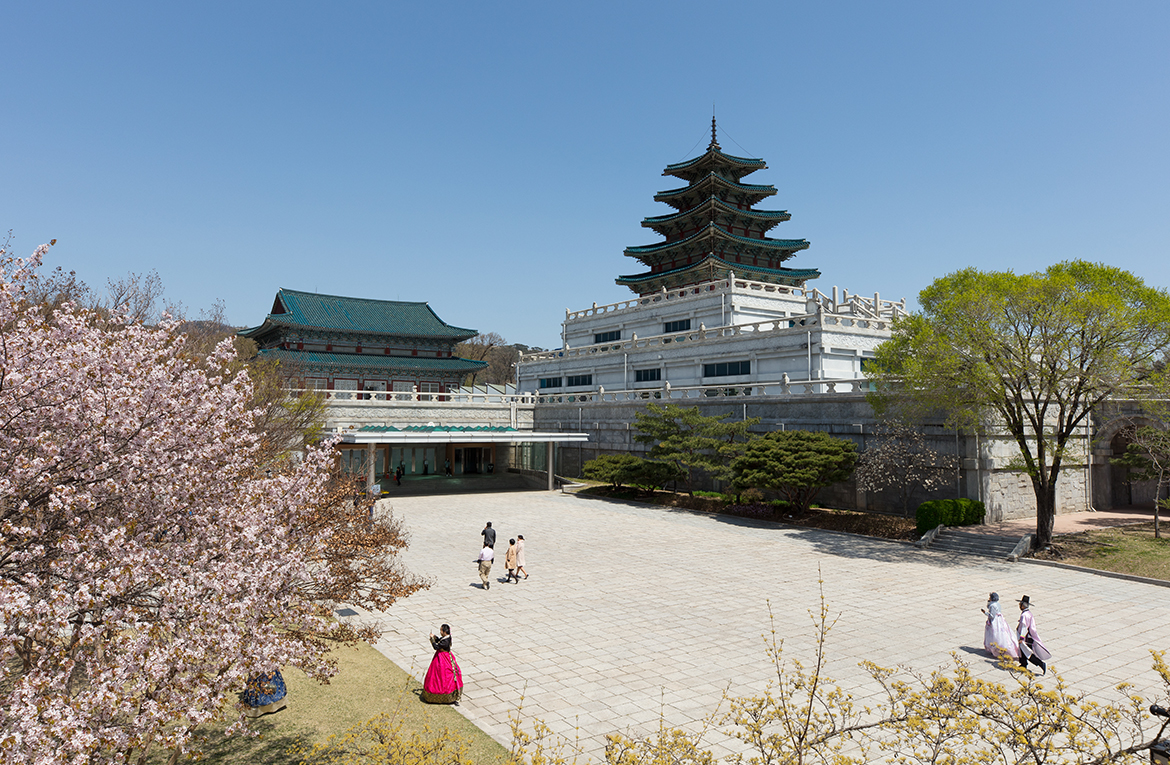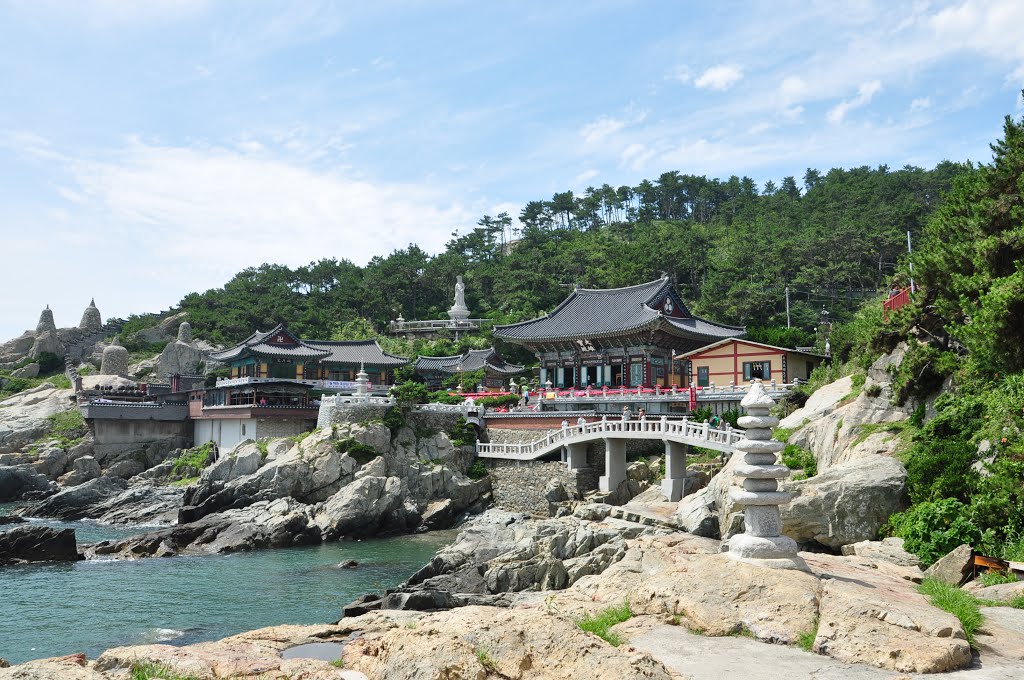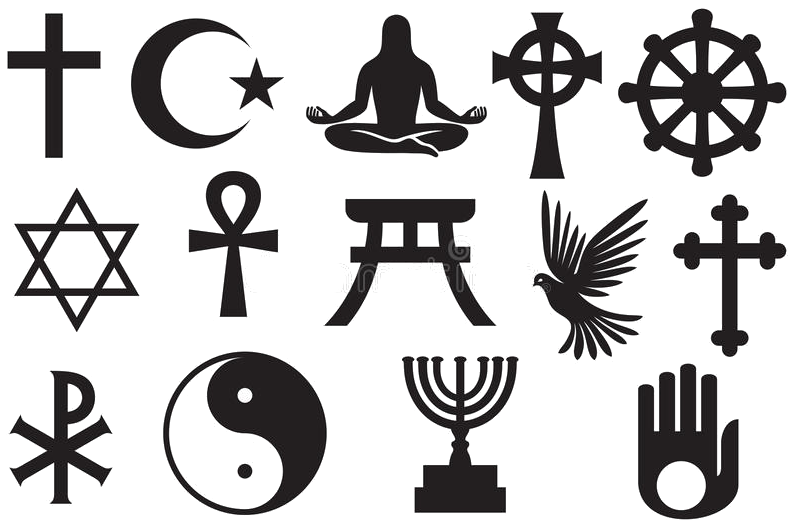
漢德百科全書 | 汉德百科全书

Der Changdeokgung (Palast der glänzenden Tugend) ist einer von fünf noch erhaltenen Königspalästen aus der Joseon-Dynastie in Südkoreas Hauptstadt Seoul.
Der Changdeokgung wurde zwischen 1405 und 1412 als zweiter Palast neben dem Gyeongbokgung (Palast des glänzenden Glücks), der eigentlichen Hauptresidenz der Joseon-Dynastie, von dem König "Taejong" errichtet. Da er östlich des Gyeongbokgung liegt, wurde der Changdeokgung auch Dongwol (Ostpalast) genannt. Bis er 1592 in der Hideyoshi-Invasion von kriegerischen Japanern in Brand gesetzt und 19 Jahre später vom 15. König Kwan Naegum erstmals wieder errichtet wurde. Nach der Wiedererrichtung diente er im Jahre 1872 als königliche Residenz und Sitz der Regierung. Ab 1907 lebte im Changdeokgung Koreas letzter König, König Sunjong. Auch nach seinem Rücktritt 1910 und seinem Tod 1926 lebten hier die letzten Mitglieder der königlichen Familie bis 1989. Bis zur Amtszeit des vorletzten Königs sollten 13 Herrscher im Palast wohnhaft gewesen sein.
Zwischen 1910 und 1945, als Korea eine Provinz Japans war, galt die Japanische Sprache als Nationalsprache. Die Hanja bzw. Kanji des Palastnamens (jap. 昌徳宮) wurden daher japanisch ausgesprochen, und er hieß in dieser Zeit Shōtokyū.
昌德宫(韩语:창덕궁)位于韩国首尔市钟路区,由朝鲜王朝(1392年–1897年)一众国王所建,是“朝鲜五大宫殿”之一。1997年被联合国教科文组织登入为世界文化遗产。[1] 位处景福宫东面,作为其之外的离宫建筑。导致昌德宫与昌庆宫—得到“东阙”的称号 (동궐)。昌德宫是最受许多朝鲜王子欢迎的宫殿,并保留了许多未被纳入到景福宫建筑的朝鲜三国时代时期的元素。事实是,昌德宫的建筑物是与周遭的自然地形混合而不是强行混合。
昌徳宮 (しょうとくきゅう、朝鮮語読み チャンドックン)は韓国ソウル特別市に所在する李氏朝鮮の宮殿。
正宮である景福宮に対する離宮[1]として創建された。現在の韓国国内の宮殿の内、最も創建時の面影を残している宮殿であり、日本の梨本宮家から嫁ぎ、大韓帝国最後の皇太子李垠の妃となった李方子(まさこ)もこの宮殿で暮らした。
正門にあたる敦化門は大韓民国最古の門といわれる。また、敦化門をくぐった先にある錦川橋は大韓民国最古の橋とされる。儀式の執り行われた正殿の仁政殿、国王が執務をしていた宣政殿、王と王妃の寝殿だった大造殿など13棟の木造建築が現存している。宮殿の北に広がる李朝時代の王朝庭園である後苑は秘苑とも呼ばれ、園内には多くのあずまやや人工池などがあり、韓国造園技術の極致といわれる。現在のものは1623年に再建された景観である。
Changdeokgung (Hangul, 창덕궁, 昌德宮; literally, "Prospering Virtue Palace"), also known as Changdeokgung Palace or Changdeok Palace, is set within a large park in Jongno-gu, Seoul, South Korea. It is one of the "Five Grand Palaces" built by the kings of the Joseon Dynasty (1392–1897).[1] As it is located east of Gyeongbok Palace, Changdeokgung—along with Changgyeonggung—is also referred to as the "East Palace" (동궐, 東闕, Donggwol).
Changdeokgung was the most favored palace of many Joseon princes and retained many elements dating from the Three Kingdoms of Korea period that were not incorporated in the more contemporary Gyeongbokgung. One such element is the fact that the buildings of Changdeokgung blend with the natural topography of the site instead of imposing themselves upon it. It, like the other Five Grand Palaces in Seoul, was heavily damaged during the Japanese occupation of Korea (1910–1945). Currently, only about 30% of the pre-Japanese structures of the East Palace Complex (Changdeokgung together with Changgyeonggung) survive.[2]
Changdeokgung ou Palais de la Prospérité (en hangeul 창덕궁) est un palais situé à Séoul en Corée du Sud. C'est l'un des cinq grands palais construits par les rois de la dynastie Joseon. Se trouvant à l'est du Palais de Gyeongbokgung, Changdeokgung est souvent appelé Palais de l'Est.
Changdeokgung était le palais favori de nombreux rois de la dynastie Joseon. Il présente de nombreuses caractéristiques[Quoi ?] spécifiques du Trois Royaumes de Corée, qui n'apparaissent plus dans l'architecture plus formaliste du Gyeongbokgung. Par exemple, les bâtiments de Changdeokung se confondent avec la topographie du site au lieu de s'imposer sur la nature.
Changdeokgung (in coreano: 창덕궁 in hangŭl, 昌德宮 in hanja, letteralmente il palazzo della prospera virtù) è un palazzo che si trova all'interno di un parco di Seul, in Corea del Sud. Si tratta di uno dei Cinque grandi palazzi costruiti dai sovrani della Dinastia Chosun; a causa della sua posizione a est del palazzo Gyeongbokgung spesso è chiamato semplicemente palazzo orientale.
Changdeokgung era il palazzo favorito di molti sovrani coreani del Medioevo e mantiene molti dei caratteri tipici dello stile coreano del periodo dei tre regni, come per esempio il fatto che si armonizza nell'ambiente circostante invece di imporvisi.
Changdeokgung (hangul: 창덕궁, hanja: 昌德宮, romanización revisada: Changdeokgung, McCune-Reischauer: Ch'angdŏkkung)? es un conjunto de palacios dentro de un gran parque en Seúl, Corea del Sur. Es uno de los grandes palacios construidos por la Dinastía Chosŏn y, por causa de su localización al este del Palacio de Gyeongbok es muchas veces llamado Palacio del Este.
Ch'angdokkgung era el palacio preferido de muchos reyes de la dinastía de Chosŏn y tiene muchos elementos coreanos datados del período de los Tres Reinos de Corea que no fueron incorparados en el más formal Gyeongbokgung.
Чхандоккун (кор. 창덕궁?, 昌德宮? Дворец Чхандок или Дворец Процветающей Добродетели) — дворцовый комплекс внутри большого парка в Сеуле, Южная Корея. Является одним из «Пяти Больших Дворцов», построенных ванами династии Чосон.
Сооружение дворца началось в 1405 году и было закончено в 1412 году после постройки главных ворот Тонхвамун. Ван Седжо расширил территорию комплекса на 500 тыс. квадратных метров. Дворец был полностью разрушен во время японских нашествий 1592-1598 гг. и восстановлен в 1609 году ваном Сонджо и ваном Кванхэгуном. В следующий раз дворец сгорел в 1623 году после одного из восстаний против Кванхэгуна. Чхандоккун был местом жительства королевского двора и правительства страны до 1872 года, пока не был восстановлен дворец Кёнбоккун. Последний монарх Кореи — император Сунджон жил там до своей смерти в 1926 году.













 Architecture
Architecture

 History
History
 World Heritage
World Heritage
 Review
Review
 Traditions
Traditions
 Religion
Religion